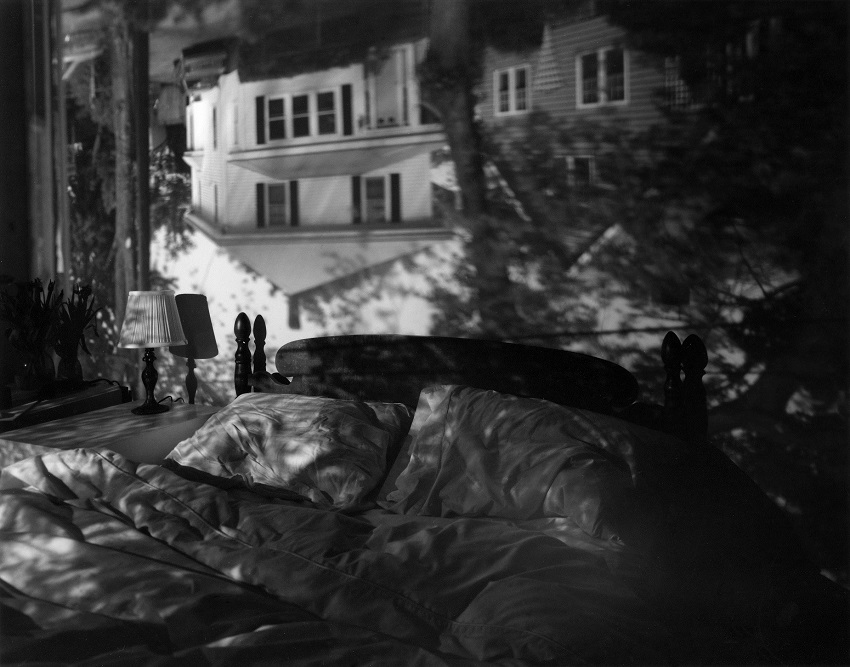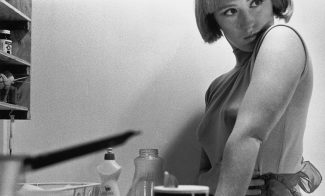Boston-based Abelardo Morell (Born 1948 in Havana, Cuba) has pursued a photographic practice that spans intimate black-and-white prints and large color images made by converting rooms into huge camera obscuras. First gaining attention in the 1980s for small-scale portraits of ordinary objects and books made with a large-format camera, Morell is now best-known for the camera obscura pictures, disorienting images of exterior views projected inversely on interior walls. Morell’s diverse photographic practice traces an interest in the everyday, affirming a belief in its aesthetic and communicative forces.
Camera Obscura: Houses Across the Street in Our Bedroom, Quincy, Massachusetts is an early example of what has become Morell’s signature approach. By covering his bedroom windows with black cloth into which he cuts a small hole, Morell creates a camera obscura, an optical technique from ancient times that is often touted as one of the origins of photography. In the final image, the facades of two houses and foliage from trees are cast upside down on the wall above a bed and nightstand. Made the first year Morell began to experiment with the technique, this piece demonstrates the poetic overlapping of public and private, exterior and interior, that would come to distinguish much of his work.

